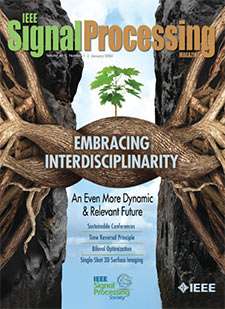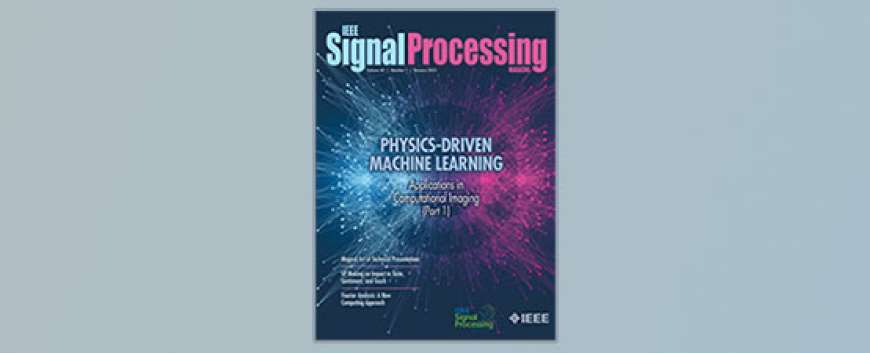IEEE SPM Special Issue on Near-Field Signal Processing: Communications, Sensing and Imaging
Manuscript Due: 1 March 2024
Publication Date: May 2025
Signal processing technologies are moving toward using small and densely packed sensors to create large aperture arrays. This allows for higher angular resolution and beamforming gain. However, with the extended aperture and small wavelength, when the receiver is in the near-field, i.e., it is closer to the transmitter than the Fraunhofer distance, the signal wavefront is no longer planar. Therefore, a spherical wavefront must be considered since the system's performance depends on both the propagation distance and the direction of the signal of interest. As a result, near-field signal processing has recently become an essential technique for both radar sensing and wireless communications to achieve spatial multiplexing with increased degrees of freedom and high-resolution with a range-dependent, very narrow beamwidth. Although near-field processing is a relatively new concept in wireless communications and sensing, it has already been extensively studied in other fields, mainly computational imaging, where the propagation distance is short, e.g., microscopy, holography, and optics, where the far-field assumption fails.
The aim of this special issue is to provide a venue for a wide and diverse audience of researchers from academia, government, and industry to survey the recent research advances in major near-field applications such as wireless communications, sensing and imaging.
Topics of Interest
The topics of interest include, but are not limited to:
- Reactive and radiative near-field signal processing for massive MIMO communications
- Short-range THz communications
- Active/passive near-field beamforming techniques
- Near-field integrated sensing and communications
- Near-field sensor array/reflecting surface processing
- Near-field automotive radar sensing and imaging
- Signal processing for near-field acoustics
- Signal processing on the spherical manifolds
- Signal processing for mixed near-field and far-field observations
- Antenna array calibration for near-field applications
- Electromagnetics/physics of near-field beamforming
- Near-field spatially varying channels, e.g., Rydberg sensors, holographic surfaces, and frequency diverse arrays
- Information metasurfaces for near-field imaging, signal processing, and wireless communications
- Signal processing for near-field localization, direction-of-arrival estimation and sensing
- Near-field synthetic aperture sounding and radar imaging
- Machine learning techniques to enable near-field systems
- Near-field wireless power transfer for 5G and IoT
- Recent advances in mid- and near-field optics via coded diffraction patterns
- Modeling and prototyping in microscopy, holography, Raman spectroscopy, crystallography and optics
Submission Guidelines
White papers are required, and full articles will be invited based on the review of white papers. The white paper format is up to 4 pages in length, including the proposed article title, motivation and significance of the topic, an outline of the proposed paper, and representative references. An author list with contact information and short bios should also be included. Submitted articles must be of tutorial/overview/survey nature, accessible to a broad audience, with significant relevance to the scope of the special issue. Authors are invited to submit their contributions by following the detailed instructions on the information for authors page for IEEE SPM.
Manuscripts should be submitted online.
Important Dates
| White paper due | 1 March 2024 |
| Invitation notification | 1 April 2024 |
| Full length manuscripts due | 15 June 2024 |
| First review to authors | 1 September 2024 |
| Revision due | 1 November 2024 |
| Second review completed | 1 January 2025 |
| Final manuscript due | 1 February 2025 |
| Publication | May 2025 |
Guest Editors
- Ahmet M. Elbir (Lead), University of Luxembourg, Luxembourg
- Ana Isabel Perez-Neira, Centre Tecnológic de Telecomunicaciones de Catalunya, Spain
- Henry Arguello, Universidad Industrial de Santander, Colombia
- Martin Haardt, Ilmenau University of Technology, Ilmenau, Germany
- Moeness G. Amin, Villanova University, USA
- Tie Jun Cui, Southeast University, China












